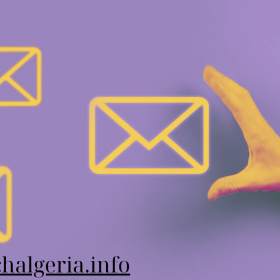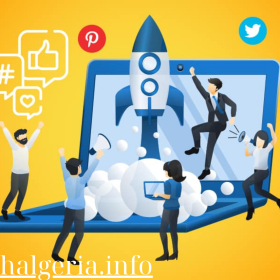In today’s competitive market, converting leads into customers requires a strategic and consistent approach. Lead nurturing automation enables businesses to build relationships with potential customers, guide them through the buyer’s journey, and engage them with relevant content at the right time. Automation not only streamlines the process but also ensures that leads are nurtured in a personalized and scalable way.
This guide explores effective lead nurturing automation strategies that can enhance engagement, improve lead quality, and drive conversions.
1. Why Lead Nurturing Automation is Essential
Lead nurturing is the process of building relationships with potential customers by providing them with relevant information and engaging content throughout their buyer journey. Automation helps businesses deliver this content at scale without sacrificing personalization, ensuring that leads receive timely and relevant communication based on their behaviors and interests.
Key Benefits of Lead Nurturing Automation:
- Increased efficiency: Automation streamlines repetitive tasks such as sending follow-up emails or triggering messages based on user actions.
- Better lead engagement: By delivering personalized content based on user behavior, automation ensures that leads stay engaged with your brand.
- Higher conversion rates: Effective lead nurturing increases the likelihood of converting prospects into paying customers by guiding them through the buyer’s journey.
Example: A software company can use lead nurturing automation to send personalized email sequences to prospects who downloaded a free trial, offering tutorials and case studies to encourage them to move from trial to purchase.
2. Segmenting Your Leads for Targeted Automation
Before implementing lead nurturing automation, it’s important to segment your leads into groups based on factors such as behavior, interests, or demographics. Segmentation allows you to deliver more targeted content and engage leads with messaging that resonates with their specific needs and pain points.
1. Segment by Buyer’s Journey Stage
Leads progress through different stages of the buyer’s journey, from awareness to consideration to decision. Each stage requires different types of content. By segmenting leads based on where they are in the journey, you can deliver the most relevant information.
- Best practices: Identify leads in each stage using lead scoring or behavioral triggers (e.g., someone who has visited your pricing page may be in the consideration stage).
2. Segment by Demographics or Firmographics
Demographic or firmographic data such as age, location, company size, and industry can help you tailor your messaging to different segments. This type of segmentation is especially useful for B2B companies targeting businesses in specific sectors or regions.
- Best practices: Use forms or surveys to collect demographic data and create segments that align with your ideal customer profiles (ICPs).
3. Segment by Behavior and Engagement
Segmenting leads based on their engagement levels or actions taken (e.g., email opens, website visits, or content downloads) helps you gauge their interest and intent. This allows you to tailor messaging based on their activity and readiness to engage with your brand.
- Best practices: Set up triggers based on specific actions, such as downloading an eBook or attending a webinar, and segment leads accordingly to deliver relevant follow-up content.
Example: An eCommerce business can segment leads who abandoned their shopping carts and trigger automated emails offering a discount or product recommendations based on their browsing behavior.
3. Building an Automated Email Nurturing Workflow
Email is one of the most effective tools for lead nurturing. Automated email workflows allow you to send personalized and timely messages to leads, based on their actions or behavior. These workflows can guide leads through the buyer’s journey with relevant content at each stage.
1. Create Drip Campaigns for Each Stage of the Buyer’s Journey
A drip campaign is a series of automated emails that are sent over time, triggered by specific actions or behaviors. These campaigns ensure that leads receive consistent communication without manual intervention.
- Best practices: Create a separate drip campaign for each stage of the buyer’s journey. For example, send educational content (like blog posts or infographics) to top-of-funnel leads, while sharing product demos or case studies with middle-of-funnel leads.
2. Personalize Email Content Based on Behavior
Automation tools allow you to personalize email content based on the actions your leads take. For example, if a lead downloads an eBook on a specific topic, you can follow up with additional resources related to that topic.
- Best practices: Use dynamic content and merge tags to personalize emails with the recipient’s name, location, or other relevant details. Include recommendations for content or products based on their behavior.
3. Trigger Emails Based on Lead Behavior
Behavior-based email triggers are one of the most powerful features of automation. These triggers allow you to send emails automatically when a lead takes a specific action, such as visiting your website, downloading a resource, or engaging with a previous email.
- Best practices: Set up triggers for key actions, such as form submissions, webinar sign-ups, or pricing page visits. Create targeted email sequences that respond to these actions with relevant follow-up content.
Example: A SaaS company can trigger a series of educational emails for leads who signed up for a webinar, including links to the webinar replay, additional resources, and a CTA to schedule a product demo.
4. Lead Scoring and Automation
Lead scoring is the process of assigning points to leads based on their behaviors and interactions with your brand. This helps you identify which leads are most likely to convert and allows you to tailor your automated campaigns accordingly.
1. Assign Points Based on Actions
Different behaviors indicate varying levels of interest or readiness to buy. By assigning points to specific actions (e.g., opening emails, visiting the website, downloading resources), you can prioritize leads based on their likelihood of converting.
- Best practices: Create a scoring system that awards higher points for high-intent actions, such as attending a demo or requesting a quote, while lower points are assigned for low-intent actions like viewing a blog post.
2. Automate Lead Segmentation Based on Scores
Once you’ve assigned points to leads, you can use automation to segment them into different workflows based on their score. For example, leads with higher scores might receive more product-focused content, while those with lower scores may continue receiving educational content.
- Best practices: Set thresholds for lead scores to trigger different automation workflows. For example, when a lead reaches a score of 50, they might be added to a high-intent nurturing campaign with personalized offers.
3. Notify Sales When a Lead Reaches a Threshold
When a lead reaches a certain score threshold, it may be time for your sales team to step in. Automation can notify your sales team when a lead becomes sales-qualified, allowing for timely follow-ups.
- Best practices: Use automation to send alerts to your sales team when a lead reaches a specific score, ensuring they can follow up quickly and engage while interest is high.
Example: A marketing automation tool assigns points to leads based on email interactions, website visits, and demo requests. Once a lead’s score reaches a threshold, an automated email offers a free trial, and the sales team is notified to follow up.
5. Content Personalization and Dynamic Content
Personalization is key to engaging leads, and dynamic content allows you to tailor your messages to individual recipients based on their preferences, behavior, or demographics. This creates a more relevant and personalized experience for leads, increasing engagement and driving conversions.
1. Use Dynamic Content in Emails
Dynamic content allows you to personalize different elements of an email based on lead data. This could include product recommendations, personalized greetings, or location-specific offers.
- Best practices: Incorporate dynamic content blocks into your emails to display different images, product suggestions, or CTAs based on the recipient’s actions or preferences.
2. Create Personalized Landing Pages
When driving leads to a landing page from an email or ad campaign, personalization can significantly improve conversion rates. Use dynamic elements on your landing pages to greet leads by name or offer location-specific deals.
- Best practices: Use automation tools to create dynamic landing pages that change based on user data (e.g., industry, location, or behavior). Ensure the page’s content aligns with the lead’s specific needs and interests.
3. Personalize Content Recommendations
Use automation to deliver personalized content recommendations based on what a lead has already consumed. For example, if a lead has downloaded a whitepaper, follow up with related case studies or blog posts.
- Best practices: Use machine learning or recommendation engines to suggest relevant content or products based on lead behavior. This keeps leads engaged and encourages them to explore more of your offerings.
Example: An online retailer sends automated product recommendations based on a lead’s browsing history, using dynamic content in the email to display items that the lead has shown interest in.
6. Multi-Channel Lead Nurturing Automation
Lead nurturing isn’t limited to email. Using multi-channel automation ensures you reach your audience on the platforms they prefer, such as social media, SMS, or even direct mail. Expanding your automation to multiple channels can improve engagement and create a more cohesive experience.
1. Use SMS for Timely and Direct Communication
SMS is a highly effective channel for sending time-sensitive messages, such as appointment reminders, exclusive offers, or event confirmations. Automating SMS can help you maintain engagement with leads in a more personal and direct way.
- Best practices: Use SMS for urgent or time-sensitive information. Personalize messages by including the lead’s name and relevant details about their actions or interests.
2. Leverage Social Media Automation
Many marketing automation tools allow you to nurture leads through social media platforms, such as retargeting ads or direct messages. Social media automation can help you stay top-of-mind with leads and drive them back to your website or landing pages.
- Best practices: Retarget leads who have engaged with your website or content on social media. Use automated messaging to deliver personalized offers or content directly through social channels.
3. Automate Direct Mail for High-Value Leads
For high-value or B2B leads, automated direct mail can be an effective way to break through the noise. Sending personalized, physical materials such as brochures or welcome kits can make a lasting impression.
- Best practices: Use direct mail automation to send personalized items when a lead reaches a certain score or completes a key action, such as attending a demo or signing up for a trial.
Example: An event management company uses multi-channel automation to nurture leads by sending personalized emails, SMS reminders for upcoming webinars, and retargeting ads on social media based on webinar attendance.
Conclusion: Optimizing Lead Nurturing with Automation
Lead nurturing automation allows businesses to engage with prospects in a personalized, scalable, and efficient way. By leveraging segmentation, building targeted email workflows, using lead scoring, and integrating multi-channel strategies, you can guide leads through the buyer’s journey more effectively and improve conversion rates. Personalizing content through dynamic elements and reaching leads on their preferred platforms ensures that your nurturing efforts are relevant, timely, and impactful.


